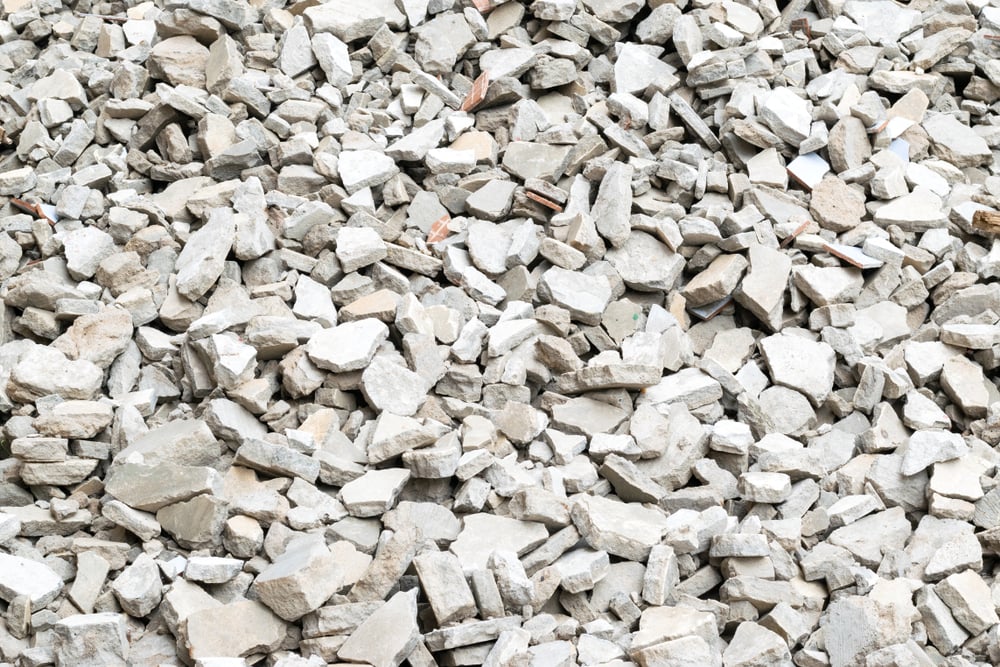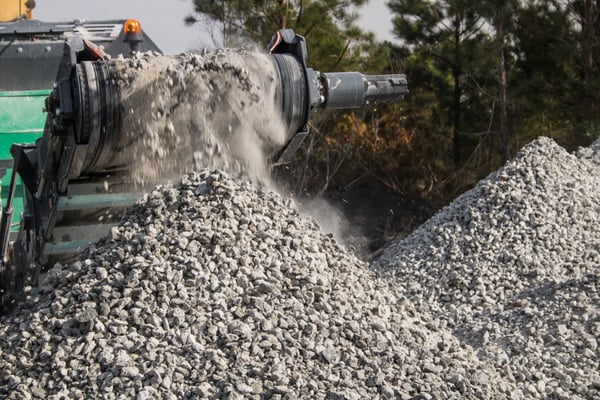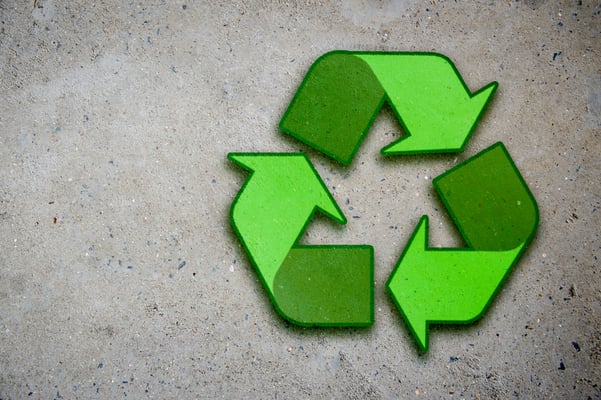Concrete Recycling & Reusing | How to Recycle Concrete?

Many construction projects require some sort of demolition work during their early stages. This may include demolishing concrete foundations, driveways, sidewalks, walls and other building elements. The process results in large amounts of heavy construction materials that usually go to waste.
Many materials, including concrete, can be recycled and reused in many ways. The process of recycling concrete varies, and the best method for each project will depend on the size and shape of the concrete pieces recycled.
Reusing concrete can help reduce construction costs, since it saves the cost of transporting concrete to the landfill, which is around $0.25/ton/mile. Recycling also eliminates disposal costs, while reducing the environmental impact of the project. Concrete that is recycled will not end up in landfills and can also replace raw materials. It can be used instead of gravel, for example, which must otherwise be collected and transported to the job site.
Reduce your project's cost and environmental impact with green construction measures.
How to Recycle Concrete?
When recycling old concrete from a demolition, the most common procedure is the following:
- STEP 1: Large pieces of concrete are first crushed with special industrial equipment that uses jaws and large impactors.
- STEP 2: Once the concrete is broken drown, it is screened to remove any dirt or contaminating particles. Additional processes and equipment such as water flotation, separators and magnets are used to remove other impurities from concrete.
- STEP 3: Concrete is separated into large and small aggregate.
There is an alternative method to recycle concrete that involves pulverization. However, this complicates the separation process and may result in more contamination from smaller byproducts.

As described above, industrial equipment is required to recycle concrete in the most effective way. When concrete recycling is being considered, make sure to evaluate all options in the market for the crushing procedure. A common solution is renting or buying a portable crusher that can be used in several projects at a time. Before deciding which equipment is the most adequate for the project, consider the following:
- Concrete must be separated from steel. This is key for recycling, so make sure the equipment has a separator strong enough to pull steel from concrete.
- Systems with a separate hydraulic stand can be set up faster.
- Control systems can be manual, automatic or remote, so consider which one is more effective for the project. This may also influence the price of the equipment.
- Some equipment has an entire system with conveyors, jaws and cones. It can complete the entire recycling process from demolition to the final usable product.
Benefits of Recycling Concrete

There are several benefits that come from recycling concrete at construction sites:
- First and foremost, recycling concrete reduces construction waste.
- Extending the life of landfills.
- Reducing costs generated from disposal and tipping fees.
- Lowering transportation costs, since concrete can be recycled near demolition sites.
- Recycling concrete can help earn LEED certification points.
- Generating employment opportunities.
Where Can Recycled Concrete Be Used?
Recycled concrete can be used in a similar way to gravel and aggregates. The following are some examples:
- Base for new asphalt pavement: There is a process called rubblization, which consists of breaking down old concrete pavement, and using it as a base for asphalt.
- Outdoor surfaces: Permeable concrete is used in driveways, parking lots and walkways to reduce the runoff that must be handled by storm sewer systems. Permeable concrete also helps replenish groundwater levels. In some outdoor areas, crushed concrete can be used to create porous surfaces that work similar to permeable concrete.
- Landscaping mulch: Recycled concrete that has been carefully crushed and sorted can be used instead of gravel.
- Bed foundation material for utility trenches: These trenches are covered with gravel to assist drainage, and recycled concrete can be used as a substitute.
- Concrete aggregate: Recycled concrete can be used as a replacement for new aggregates in a concrete mixture.
- Erosion barriers and reef habitats: Large pieces of broken concrete can be placed along stream banks to control erosion, or in shorelines to form the foundation for coral reefs. However, it is important to analyze the chemical composition of old concrete before placing it in aquatic habitats.
Recycled concrete saves on both new materials and disposal costs, and it can be used for various applications. This also reduces the environmental impact of building projects, while helping earn credits towards a LEED certification.
Nearby EngineersNew York Engineers has a MEP design track record of 1,000+ projects. Contact us via email (info@ny-engineers.com) or phone (786) 788-0295212-575-5300, and make sure your building systems meet codes.

Michael Tobias
Michael Tobias, the Founding Principal of NY Engineers, currently leads a team of 50+ MEP/FP engineers and has led over 1,000 projects in the US
Join 15,000+ Fellow Architects and Contractors
Get expert engineering tips straight to your inbox. Subscribe to the NY Engineers Blog below.



